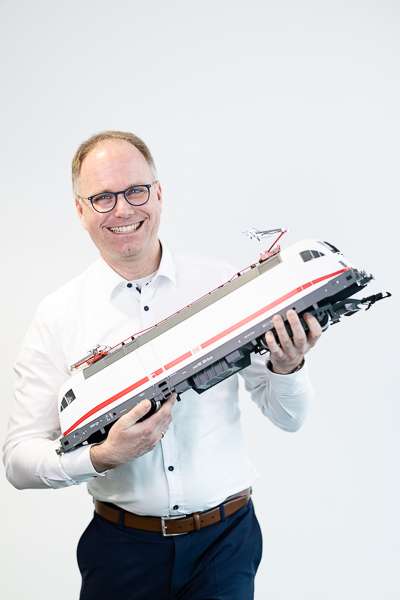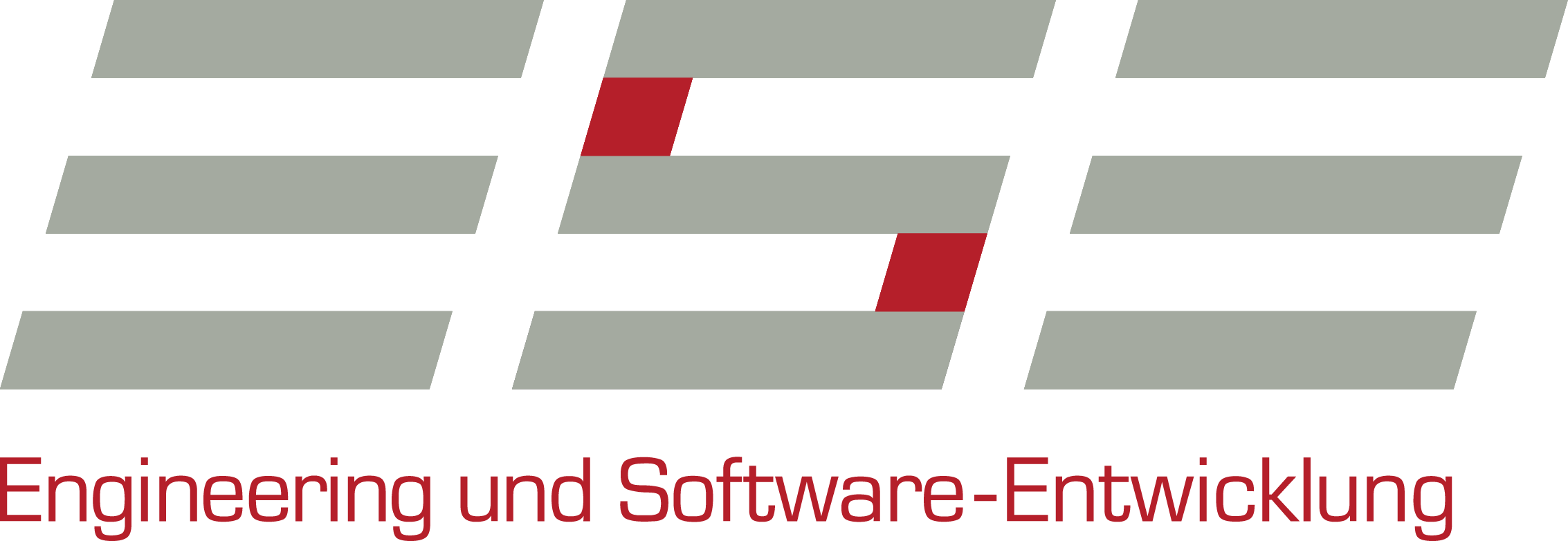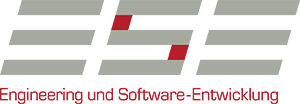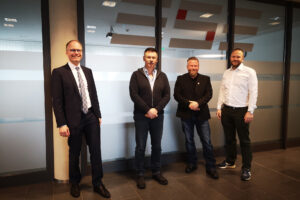Interview with Lars Schnieder: Planning and cooperation in the rail sector
The trade magazine “Eisenbahntechnische Rundschau” (ETR) is a source of inspiration for the railroad system. An interview with our Chief Executive Officer (CEO) Lars Schnieder was published in the 9th issue of ETR 2023. In an interview with editor-in-chief Dagmar Rees, he spoke about the digitalization of rail transport.
The rail sector is facing major changes, including in terms of technology. Do you see opportunities to speed up the approval process?
A first step would be taken if regional rail transport authorities were to harmonize or standardize their requirements in order to limit the number of variants of rail vehicles. At the moment, each public transport authority is realizing itself in the specification of its vehicle concepts. VDV Tram-Train is a good example of such cooperation. Several public authorities have come together here and pooled their requirements. The contracted manufacturer, in this case Stadler, was then able to develop the most suitable variants and exploit synergy effects. This procedure not only prevented several runs through the manufacturer, but also the approval process. For me, the second step would be a joint technology roadmap for topics such as vehicle conversion to ERTMS/ETCS, the transition to the new FRMCS rail radio system and the introduction of Automated Train Operation (ATO) to prevent vehicles having to go through the approval process again and again. We therefore need to manage to bundle the introduction of these already foreseeable technological innovations over time. So we only have to allow it once instead of three times.
A few months ago, the representative of a locomotive manufacturer suggested a moratorium on the further development of the ETCS version so that everyone in Europe could work on the same basis for a few years.
I do not yet see that we have reached a level in Germany where all use cases have been specified with the operational-technical system functions. We cannot do without further development. On the other hand, ETCS Baseline 3, or more precisely SRS Release 3.6.0, already offers many modules that can actually be used to implement many operational scenarios. Therefore, I can follow the idea without being able to judge conclusively whether this is necessary and whether SRS 3.6.0 is the right version.
So in Germany, operation in ETCS needs to be specified in more detail?
The operational-technical system functions are the answer to how we want to live the ETCS toolbox in Germany, because they implement use cases in ETCS. One example is the coupling of trains: Is this implemented as a shunting movement or as a movement with a replacement signal? Such things still need to be defined. Up to now, ETCS has worked more in the direction of high-speed traffic. With the Digital Node Stuttgart, we are now also working on local transport so that we can also operate local transport networks with increased capacity in the future. There are still many tasks to be solved in the operational-technical system functions. At the same time, it must be borne in mind that the proportion of ETCS routes in the overall network is currently in the single-digit percentage range. However, we want to have the entire network in Germany equipped with ETCS by the end of the next decade. We need planning acceleration here, also through digitalization.
At a conference, it was discussed that one point that had slowed down the Digital Node pilot project was that it often had to be clarified and agreed first which standards should be applied and which approval processes should apply.
Generally speaking, the administrative regulation on new type approval (VVNTZ) was initially used for approvals, which was then replaced not so long ago by the procedure according to the sector guideline. We still need to gain further experience in how the EIGV can be put into practice in conjunction with the sector guideline. That is an issue. The second topic is Cybersecurity. This is a new field for the rail sector. The Federal Railway Authority sees many inspection areas here; if the inspections are carried out by individual protagonists and then brought together by an expert, there will always be friction losses. We do not yet have a stringent procedure for how the topic of Cybersecurity should be handled under licensing law. Cybersecurity is becoming increasingly important because all digital technologies that we want to introduce are based on networking, and networking means that we will have new external influencing factors. This is where we need to sharpen our sword so that we can successfully wage this battle against the threat from outside.
Could the Digital Node Stuttgart provide a blueprint for Cybersecurity?
We use industry standards for the digital interlocking system in Stuttgart. This makes good business sense and is the right thing to do. At the same time, however, this also creates new potential access options. Therefore, it is right that the Federal Railway Authority is carrying out intensive checks here and is pursuing all cybersecurity issues very seriously. What we must not lose sight of is the question of what the standard of appropriateness will be. This has been clearly established at Safety: We have methods of risk analysis that give us clear assessment criteria with tolerable hazard rates. We also need this for security: we have to define how much security is enough. Of course, the answer will always be dynamic, because the attack options are also constantly evolving. But you have to be able to draw a clear line when it comes to approval, because otherwise the requirements become immeasurable. Then we will no longer be economical as a mode of transport and therefore no longer competitive.
You mentioned the acceleration of planning through digitalization. What opportunities do you see here? Are you also thinking about artificial intelligence?
The inventory data, including the raster graphics, is highly analog. How can these be digitized? There are already examples, including from Deutsche Bahn, of how artificial intelligence can be used to recognize images. It is conceivable, for example, to use this for the detection and digital recording of signal types. It also needs to be clarified how the quality of this data can be secured and subsequently imported into CAD programs. So far, people still have to carry out the verification to check the plausibility of the data. However, this can certainly be implemented in the future with digital tools at a different speed than today.
Another possibility is to use drone flights or recording trips to retrograde the digital twin from the existing infrastructure. This digital image is then used later in project planning, including for control and safety systems. The actual system-specific project planning is already mapped digitally by the manufacturers in the form of software. The next question is how to simplify the acceptance process using automatic testing machines. These could reduce the amount of data for the auditor that is viewed during software plan checks. This is because plan and acceptance inspectors will also be a bottleneck resource for the foreseeable future. If we have standards, Eulynx for example, many things can be checked by manufacturer-independent conformity tests. This would then also speed up the integration tests. Nevertheless, in the end there must always be the expert, who is unfortunately also a “stardust resource”.
Of course, digitalization could then also be used in the training and further education of inspectors and experts, automating certain inspection processes and the recognition of inspectors and experts. Are the automation processes surrounding the audit already being addressed?
We already carry out tests supported by digital tools for highly automated local transport and are also accredited for this. For example, it is possible to check whether a route logic has been mapped correctly. We can also transfer our experience in local transport, incidentally up to GoA 4, to “the big railroads”, because a route atlas of the ETCS Radio Block Center is no different in terms of its task than a route atlas of the CBTC system of the Oslo metro. Three years ago, China put 1000 km of metro into operation in one year. I know that one should be careful with comparisons, many parameters are different and local transport is simpler than rail – nevertheless, in my opinion, this example shows how performant the rail industry can be and what speeds can also be achieved in the rail sector. We should therefore look together to see where the sand is in the gears in Germany.

I do not yet see that we have reached a level in Germany where all use cases have been specified with the operational-technical system functions. We cannot do without further development.
Does China already use the automated digital processes you described, or does the country have enough people to achieve this high speed manually?
It is a market that is very attractive and in which many manufacturers are active, both international and local. CBTC solutions are proprietary, ETCS is standardized. The price for the speed achieved by proprietary systems is that the manufacturer of the original system must always be commissioned for future migrations. For ETCS in Europe, there are only a handful of manufacturers with limited capacities. However, Eulynx is changing this, and I assume that in five to ten years we will have twice as many manufacturers on the market and capacity will hardly be a problem on the manufacturer side. However, this then shifts the problem back to the capacity side of planning and acceptance testing.
Why does Eulynx increase the number of competitors?
Thanks to Eulynx and the associated standardization, the market for control and safety technology is no longer solely nationally defined, but is now open throughout the EU. This makes it attractive for new manufacturers to enter the market.
When it comes to the ETCS retrofitting of locomotives, there are sometimes doubts whether this can be achieved to the necessary extent and with the necessary speed. High costs for approval are also cited as an obstacle. Are there methods to speed up the conversion and reduce costs?
I would focus on best practices here. For me, Denmark is an example of best practice. Ten years ago, Denmark set out to upgrade the entire country’s signaling technology to ETCS. They have consistently followed this path and have awarded three contracts: Infrastructure on Jutland and the Danish islands and for the vehicles. They have thus bundled all the requirements in Denmark. This avoids having to touch a vehicle type several times. We should also be able to do this in Germany: To bundle the requirements for one vehicle type across all rail transport companies in order to go through the approval process or, later on, simplified type approval for variants. This must, of course, be implemented correctly in terms of procurement law, as it also means that a vehicle type is only equipped with the ETCS onboard device of a single manufacturer and not with devices from several different manufacturers. We cannot and should not afford to register the same type of vehicle several times, either financially or in terms of deadlines, as is the case when equipping the same type of vehicle with equipment from different manufacturers. If we could implement this, we would significantly advance the sector.
Do you need an integrator to do this bundling?
There is certainly a need for holistic program management as a service for the industry. With Digital Rail Germany, such a project organization for the trackside rollout of ETCS has already been established for some time. We also need this for rail vehicles. If we don’t do this, there is a risk that at some point the infrastructure will be converted to ETCS, but the vehicles will not. Concerted action must therefore be taken in the sector. The Association of German Transport Companies (VDV) could play a role here, as it also has the needs of non-DB companies in mind. There will also have to be a funding corridor via the Federal Ministry for Digital and Transport.
When it comes to the question of how railroads can be simplified and made more cost-effective in the long term, shouldn’t ETCS Level 3 also play a role here?
A hybrid concept that also allows mixed operation with conventional trains is certainly needed first. In my opinion, if you wanted to, you could certainly find applications where ETCS Level 3 could already be implemented, for example on the high-speed line between Frankfurt and Cologne or on the Hamburg S-Bahn. We have also already discussed the western regional bypass near Frankfurt. But do we have the capacity for this if the changeover to ETCS Level 2 does not have the propulsion we want? Do we have the time to adapt the regulations accordingly? On the other hand, we could be a little more progressive where level 3 would be necessary to achieve the desired performance. It’s always a question of whether you take a risk and try something out. Of course, this is only a project risk – security risks are non-negotiable.
You read at RWTH Aachen University and have also been an honorary professor at TU Braunschweig for several months – is there enough new talent for the rail sector?
RWTH Aachen University has found the right approach. With the Master’s degree course in Railway Systems Engineering, it has set up a flagship project that enables specialists from abroad to obtain a professional qualification in the field of rail transport technology. This range of courses has appeal, which is also reflected in the fact that 70 students begin their studies every year. These are students who have all previously completed a Bachelor’s degree, mostly in mechanical or civil engineering, unfortunately less so in electrical engineering or computer science. You can see that such a study program is attractive and accepted in Germany. I enjoy myself teaching here because many of the students have already had professional experience in their home countries. English-language degree courses are an opportunity to attract skilled workers from abroad to Germany. As a control and safety technician, I don’t always find the expertise I need on a one-to-one basis. There are also language barriers. This means that the host company also has a responsibility to provide further training. Although this study program does not produce the ideal German-speaking graduate, it does produce a graduate who has demonstrably acquired knowledge and, by going abroad and acquiring his or her knowledge at a foreign university, has also shown that he or she is prepared to “go the extra mile”. The TU Braunschweig is also planning to introduce English courses in the medium term. If the Aachen example sets a precedent, I’m not worried about the future. But Aachen alone is of course not enough.
So more English-language offerings are needed to cast the net wider?
We have a broad-based university landscape in Germany that deals with rail as a mode of transport and is capable of producing a sufficient number of good graduates. However, mint subjects are not chosen by German pupils as often as they should be. The population statistics also show that we will not be able to meet the demand with German-speaking graduates alone. Especially as demand will continue to increase with the ramp-up of digital rail in Germany.
As one of the mint subjects, math has no numerus clausus, but high drop-out rates at German universities. Would there be a pool of students here that could be targeted?
Math is an auxiliary science for engineers. If you started studying math, you may have wanted to work in a scientific rather than an applied field and therefore have no interest in railroad engineering, mechanical engineering or civil engineering. Nevertheless, these math dropouts naturally represent a pool of potentially interested people. In Lower Saxony, they are already being specifically approached in order to attract them to other subjects. In general, the rail industry needs to open up more and be prepared to draw on many different sources. This begins with suitable training opportunities, such as IT specialists, continues with dual study programs to retain students at an early stage, and does not end with the promotion of lifelong learning, i.e. the continuous further qualification of employees. In close cooperation with the IHK, it is possible to further develop employees with many years of experience in their respective training occupation up to a degree equivalent to a traditional academic degree – the “Bachelor Professional” or the “Master Professional”. We need to offer diverse and flexible educational opportunities in the intermediate area between industrial training and academic master’s degrees. In this way, we also empower those employees who were initially unable to develop their potential, but then develop the will during their career and contribute the ability through their professional experience. We can no longer think only in black and white, in non-academic and academic terms.
A private question: How do you relax?
In short: family time and sport. I enjoy actively accompanying our twins’ hobbies in my free time and being able to switch off from everyday working life. Otherwise, I clear my head by running.



